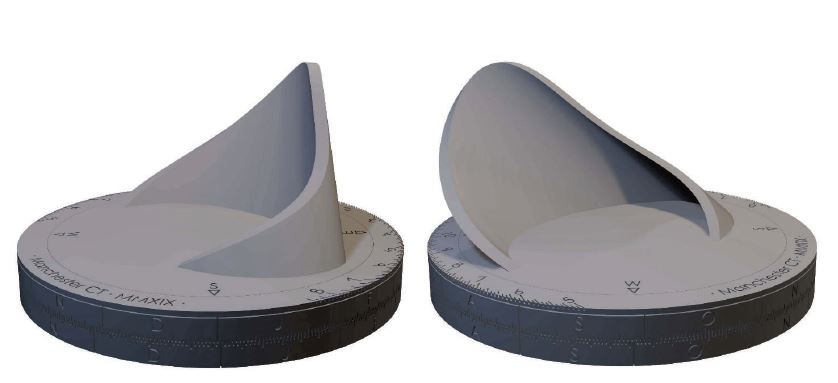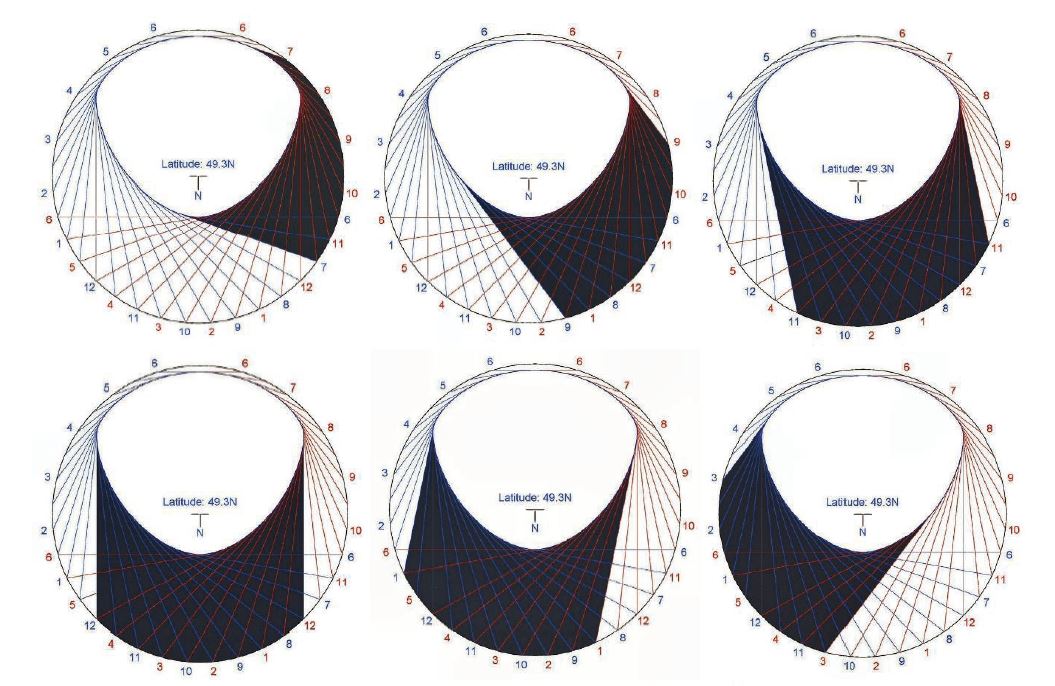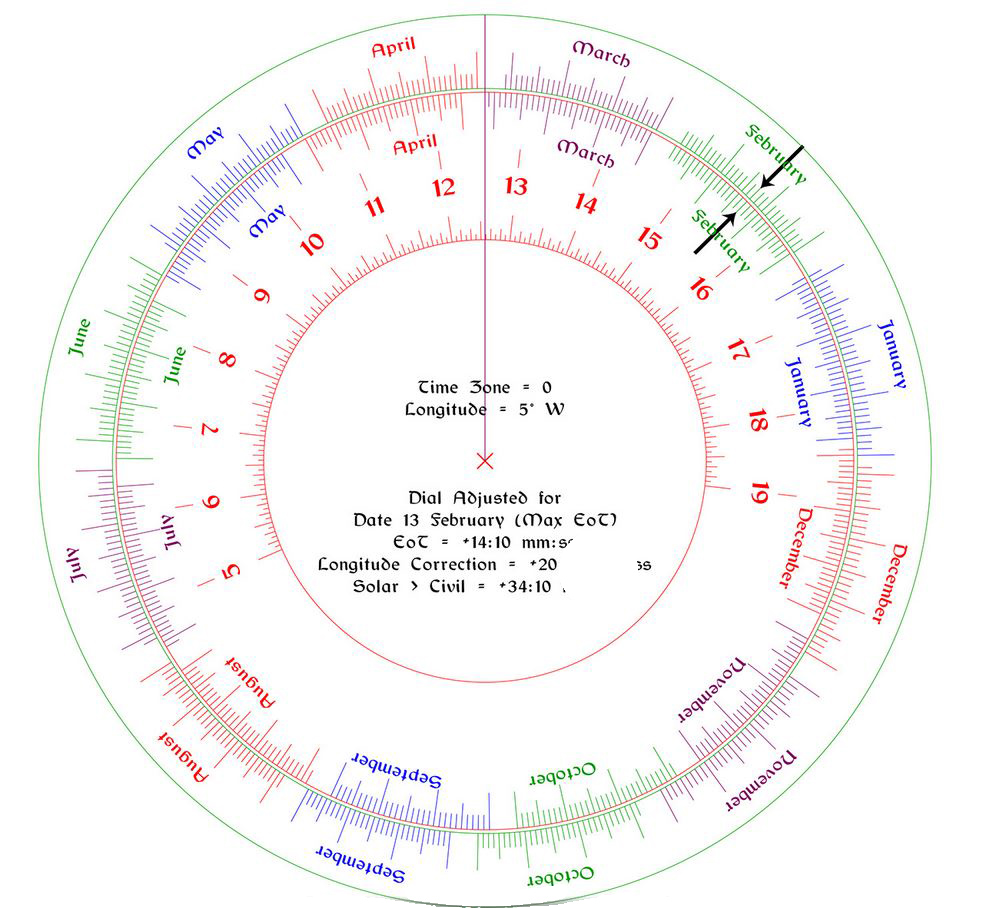The Polar Envelope Sundial was invented by Fred Sawyer III in 2019 and brought to realization by the 3D printing expertise of Steve Lelievre. As you can see, this is a sundial of very unique style.

A full mathematical explanation of the unusual shape of this dial is given in the NASS Compendium vol. 26(4) Dec 2019, but the roots of the dial stretch back to the Foster-Lambert dial invented in the 17th century by Samuel Foster and again independently in the 18th century by J.H. Lambert.
In essence, the Polar Envelope Dial is similar to the analemmatic (Human) sundial, but uses a sloped gnomon to change the usual elliptical hour ring into a circular ring with an equal spaced time scale.
But the eye-catching shape of the dial is created by its peculiarly shaped gnomon. It is common in horizontal sundials that have a noticeable width to have a “noon gap” allowing time to be told in the morning using the left (west) edge of the gnomon’s style and in the afternoon using the right (east) edge of the gnomon’s style. With the Polar Envelope Dial using an extremely wide gnomon, dials can be constructed using either the leading or trailing edge of the gnomon’s shadow to tell time. Here’s a top-down view at several different times of the day:

For practical purposes the Polar Envelope Sundial uses the leading edge.
One of the most important features (unlike almost any other sundial except for the equatorial dial) is the uniform spacing of the hour marks. This allows the insertion of a date ring to shift reading of the solar time to civil time by adding both longitude correction (dial site to meridian zone solar time) and the Equation of Time (to correct for the uneven elapse of noon-to-noon solar time caused by the earth’s eccentric orbit around the sun and its tilt of 23.5 degrees to the ecliptic.)
Many are familiar with the Equation of Time listed as a table of correction times or as a graph showing the sundial correction to civil time versus the day of the year. But if the Equation of Time correction is represented as a slight rotating angle versus date, this allows the Polar Envelope Dial to easily tell civil time. The correction is provided by a Pilkington Scale Ring.

The Pilkington Scale on the Polar Envelope Dial is marked for the 1st, 11th, and 21st of each month. The outer edge of the base and the inner edge of the ring are both marked with calendars (date scales). Once the sundial has been installed on a horizontal surface with the base aligned to Earth’s Pole (true North or South), it is ready for use. The sundial is adjusted daily by turning the ring to line up the calendar position for the current date on the ring with the corresponding position on the fixed base. This provides the proper rotation to read Civil Time. Then the gnomon shadow matches clock time throughout the day and is capable of telling Civil Time to within only a couple of minutes if it is properly aligned.
NASS is making these fascinating sundials available in PLA plastic. If you are interested in owning one, please contact Steve Lelievre at This email address is being protected from spambots. You need JavaScript enabled to view it. to make arrangements before placing your order through our NASS Shop using PayPal
We can only produce this dial for latitudes greater than 40° N or 40° S. At lower latitudes, the concept is equally valid but it becomes impractical to 3D-print the complex gnomon. Instead, we offer a wedge that can be used to incline a 40° dial to work at a lower latitude. Should you wish to pursue this option, a suitable wedge will be included with your dial.
